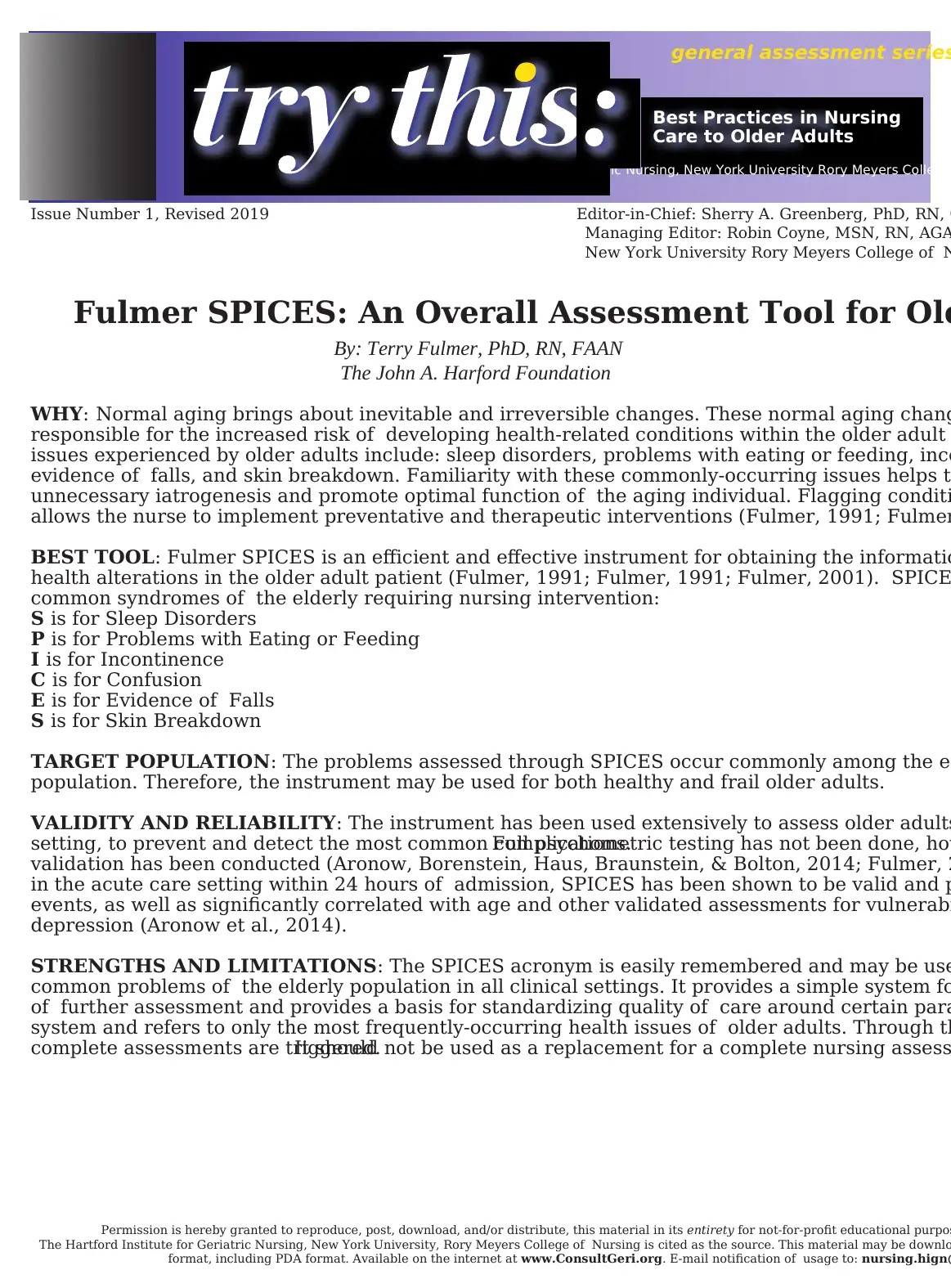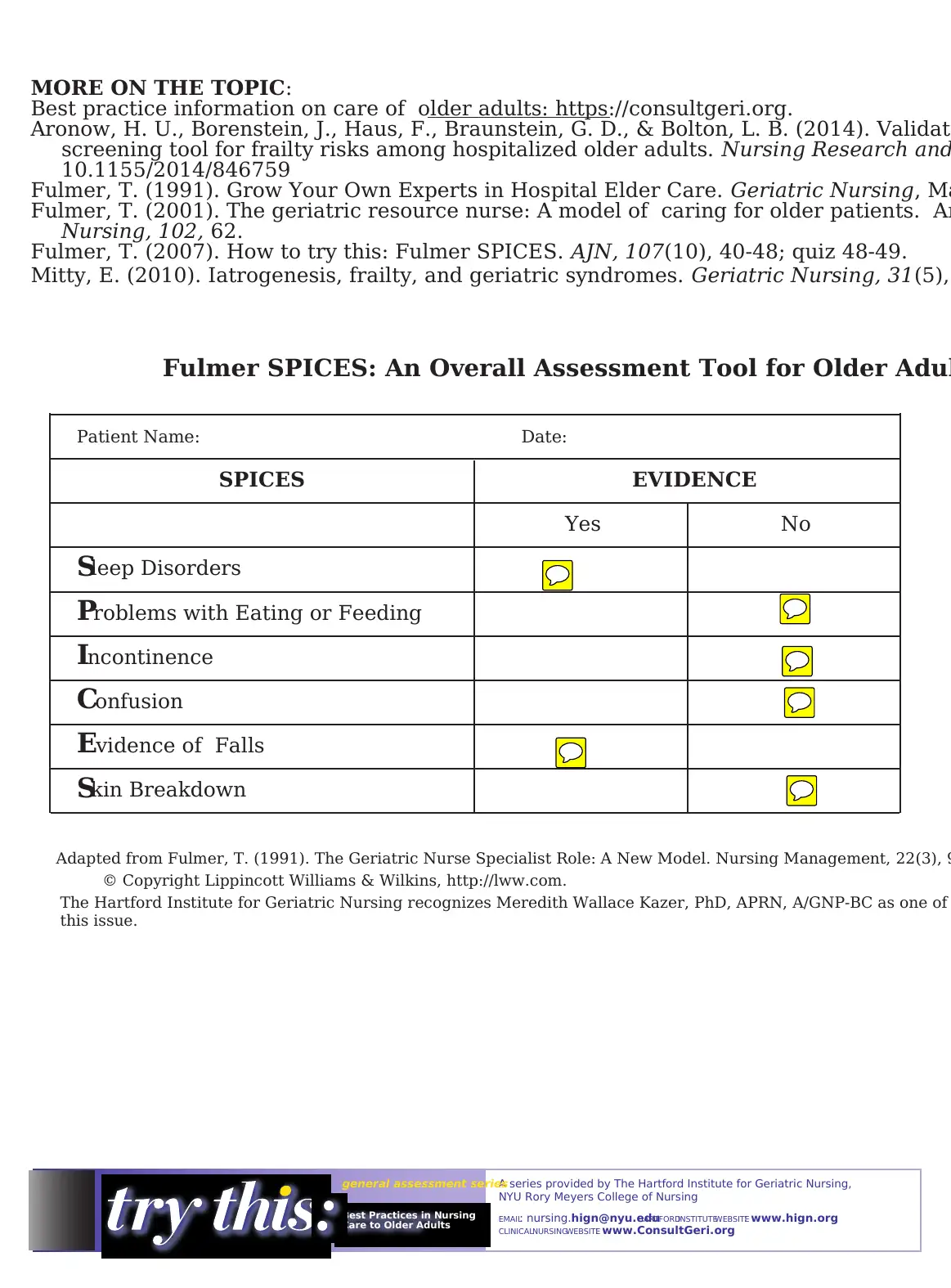Fulmer SPICES: Comprehensive Geriatric Assessment Tool - NYU Nursing
VerifiedAdded on 2023/04/25
|2
|924
|71
Practical Assignment
AI Summary
The document presents the Fulmer SPICES, an assessment tool designed to identify common geriatric syndromes in older adults. SPICES is an acronym that stands for Sleep Disorders, Problems with Eating or Feeding, Incontinence, Confusion, Evidence of Falls, and Skin Breakdown. Developed by Terry Fulmer and supported by The Hartford Institute for Geriatric Nursing at New York University, the tool is intended for use across the spectrum of older adults, both healthy and frail, primarily in hospital settings. It serves as an alert system, flagging areas needing further assessment and enabling preventative and therapeutic interventions. While not a replacement for a complete nursing assessment, SPICES has demonstrated validity in predicting adverse events and correlating with age, comorbidities, and depression. The document includes the SPICES assessment form and references best practices in geriatric nursing care, emphasizing the importance of recognizing and addressing these prevalent issues to promote optimal function and prevent iatrogenesis in the aging population. Desklib offers a wealth of similar solved assignments for students.
1 out of 2



![[object Object]](/_next/static/media/star-bottom.7253800d.svg)